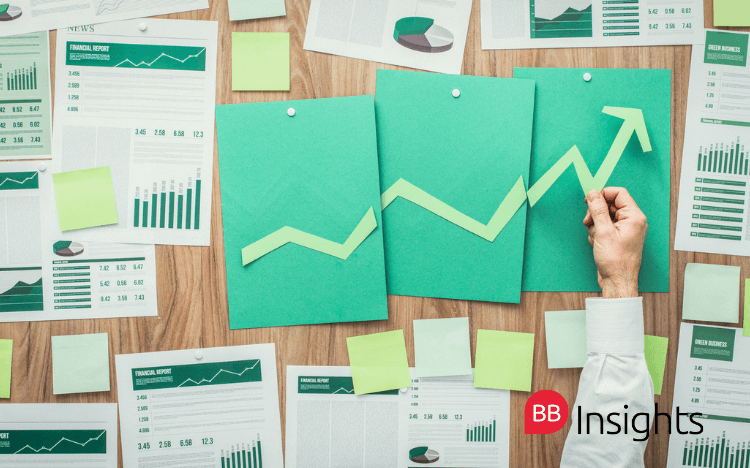
To be successful in today’s business, you need to drive green growth.
Combined pressures from customers, employees, investors and regulatory agencies are forcing businesses to promote sustainability and reduce the damage done to the planet and its people.
In addition, McKinsey’s research shows that sustainable leaders driving green growth can not only increase the viability of a business, but also generate greater profits and greater business opportunities.
So what exactly is green growth and how can we apply a successful green growth strategy?
What is green growth?
According to Luciano Valine Cruz (Photo), HEC Montreal’s Corporate Social Responsibility (CSR) Leader and Professor Green Growth refers to promoting economic growth on a sustainable basis.
HEC Montréal’s full-time MBA is ranked by Corporate Knights as one of the 30 best sustainability MBA programs in the world, integrating green growth and CSR throughout the curriculum.
“Reducing emissions remains a challenge, but we also need to consider how damage can be reconstructed. Green growth is about growing with respect for the environment,” explains Luciano. increase.
By achieving green growth, organizations can support the transition to a green economy and move from a “take make waste” linear model to a model that can improve well-being and build social equality while reducing its impact on the environment. You can migrate.
The green economy has three major players: sustainable finance, a government focused on sustainability, and sustainable business.
So how can you implement your green growth strategy and build a sustainable business?
Three Ways to Implement a Green Growth Strategy
1. Consider the environmental impact of business operations
Luciano explains that the first step in ensuring economic growth on a sustainable foundation is to minimize the environmental and social impacts of business operations in the supply chain.
This can be achieved through decarbonization of the supply chain, the shift from fossil fuels to renewable and clean energy sources, and reduction of carbon emissions.
On the social side, businesses need to ensure that suppliers pay workers fair wages, that health and safety regulations are adhered to, or that child labor is eradicated.
“It’s also about how we can regenerate and grow at the same time,” says Luciano. “Green growth means having a business model that can regenerate the damaged nature.”

2. Adopt a regenerative business model
Unlike the “take-make-waste” linear model, regenerative or cyclical business models find strategies for creating waste value.
Luciano gives an example of the Circular Economy Initiative. Loop Mission began producing fresh pressed juice after being approached by Quebec fruit and vegetable importers who want to create value from food waste.
“They realized that they could reuse 1.5 kg of fruit and vegetable waste,” Luciano said. “Then a big bread-making brand approached the Loop mission and asked what they could do with the remaining bread. Loop started producing beer and mixing fruits and vegetables.”
By adopting a rehabilitation business model, companies can optimize their natural assets to generate greater profits and support their transition to a circular economy.
According to Luciano, HEC Montreal is leading research activities in this area, with seven professors from the school on Quebec on the Circular Economy, a consortium aimed at developing training and education focused on the Circular Economy. I am participating in a research network.
3. Focus on the community
Sustainable businesses also aim to uphold inclusiveness and create value for their communities.
According to Luciano, the local community was involved in the construction of the new HEC Montreal building, which opened in the fall of 2022 in downtown Montreal.
The building was considered to be essentially renewable, utilizing rooftop greening and geothermal energy. This reduces the emissions of the entire building and keeps the pollution level in the city low.

HEC Montreal’s new building in downtown Montreal, opened in the fall of 2022.
What MBA skills do you need to achieve green growth in your business?
Business schools like HEC Montreal are committed to ensuring that future leaders have access to the tools they need to master green growth and build sustainable businesses.

Valerie Drude (Photo), HEC Montreal MBA student and vice president of CSR at the MBA Student Association has over 7 years of experience in the field of sustainable development and agriculture as a consultant.
She chose to earn an MBA to hone her leadership skills and get a managerial position in post-graduation CSR consulting. She states that HEC Montreal was the right choice for her because the curriculum integrates sustainability into all MBA classes.
“You must be a generalist and strategist who can integrate environmental and social considerations into every aspect of your business,” she explains.
MBA courses offered by HEC Montreal include Sustainable Development and Environmental Management, Sustainable Supply Chain, Responsible Marketing, Financial Ethics, Contemporary Issues and Social Responsibility.
Students also have access to student clubs focused on sustainable development such as HumaniTerre, groupe NOVA and HECO respondable. There, we practice the theory by working with our peers and working on various sustainability projects.
For Luciano, the key skills needed to drive a green growth strategy include analytical skills, critical thinking and adaptability.
“You also need to be visionary, to start moving your business in the other direction,” he says.
“You may not know the solution to your problem, but if you start working today, you’ll be closer to collaborating, creating technology, and finally finding the right solution.”


Commentaires
Enregistrer un commentaire